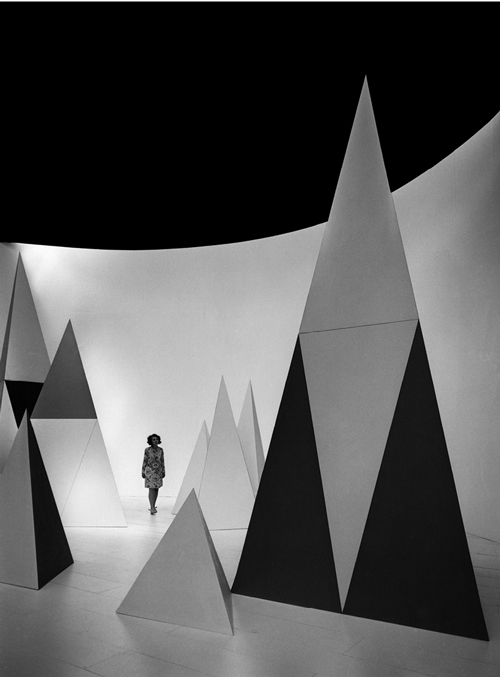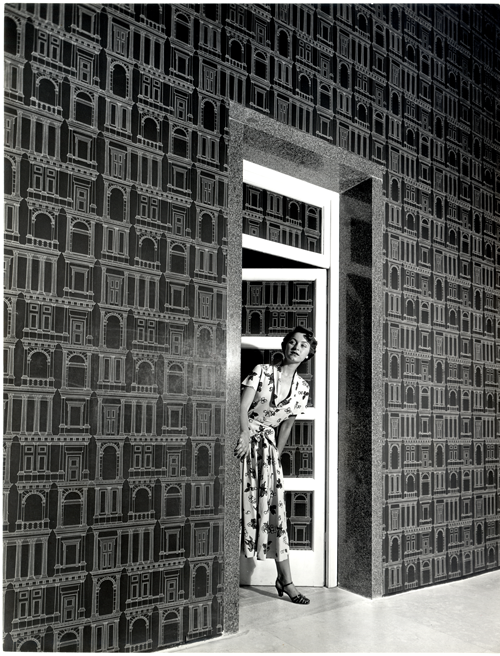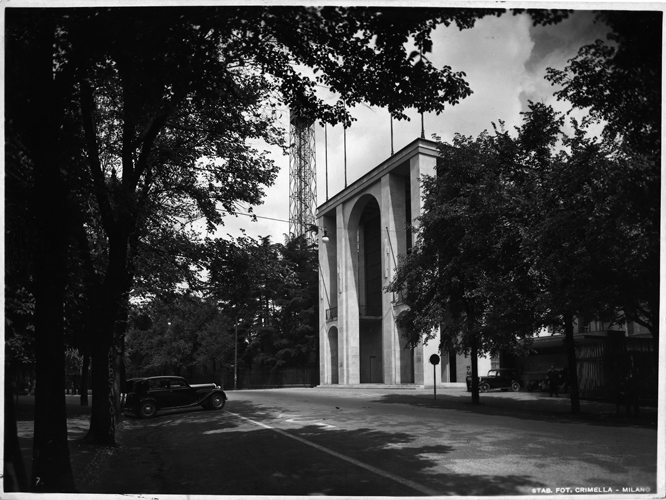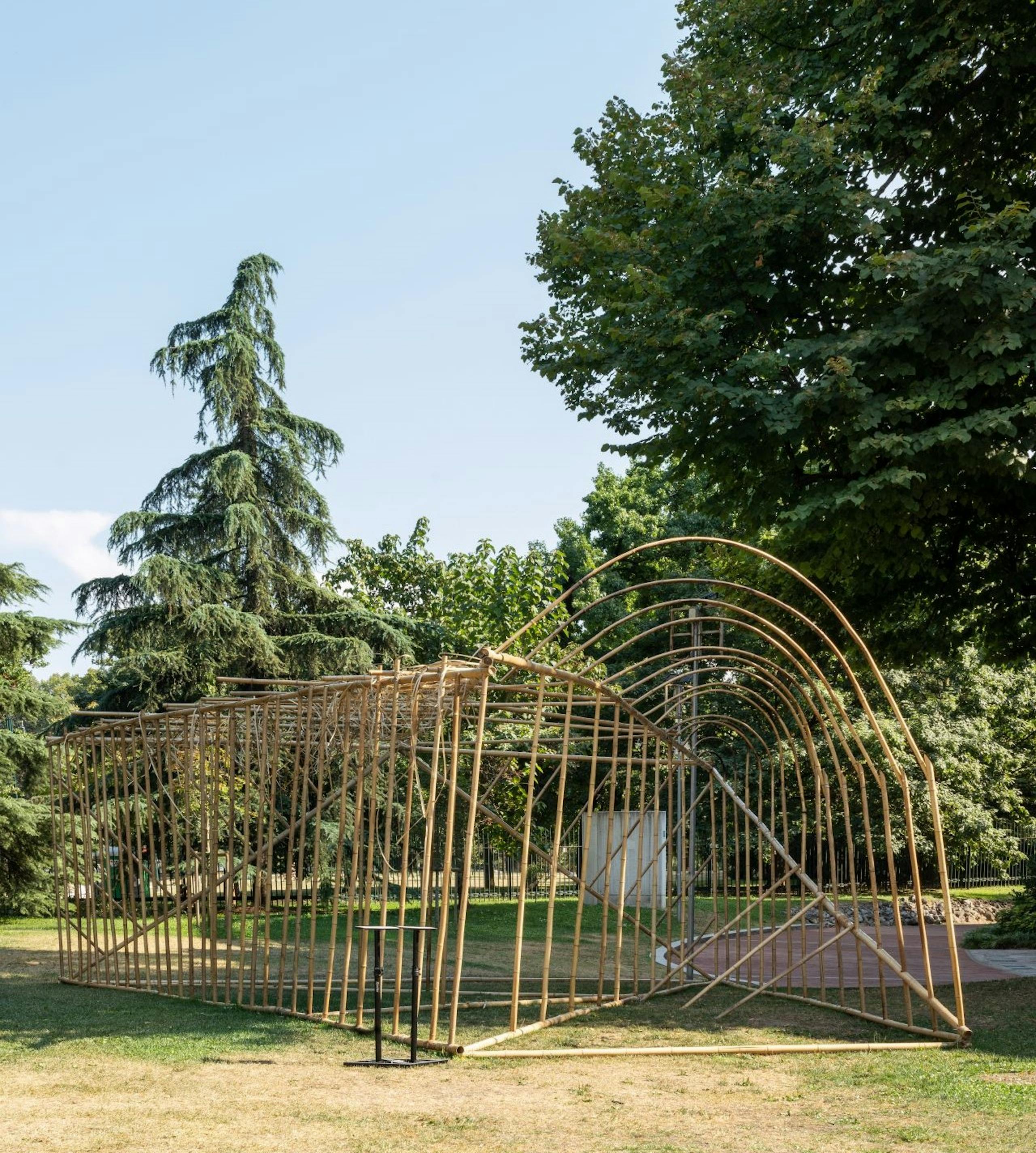
Photo: DSL Studio © Triennale Milano
China
The project focuses on the bamboo plant, symbol of chinese culture and focal element amidst taoist values. The work centers, in fact, on taoist theories about the relationship between man and nature, built around the concepts of mutual exchange and balance and always featuring a great sense of mystery.
According to the taoist creed, the bamboo plant incarnates a type of natural order that should inspire humankind and in which the general system of universal structures is reflected. The golden bamboos that constitute this work, assembled by mortise and tenon joints, represent a 30-year-long research that Weibing Liu has carried on at the feet of mount Qingcheng, cradle of taoism in China. In this evocative space, surrounded by nature, the architect has reflected about the connection among the local spiritual heritage, the temples that were built there over the centuries and the forests that surround everything.
Liu Weibing built a space in which the natural, the artificial and the symbolic come together, that is centered on both tradition and innovation, in which the architect and the local craftman work together on a mysterious environment that carries a variety of meanings. It is a structure whose organized chaos does not hide its cultural origin and starts an untangible dialogue with what is beyond, based on the taoist theory according to which the true meaning of thing is always hidden.
Credits
Organising body:
CCPIT Construction branch
Curator and Exhibition Designer:
Weibing Liu
Partner:
Zehong Ma
Highlights
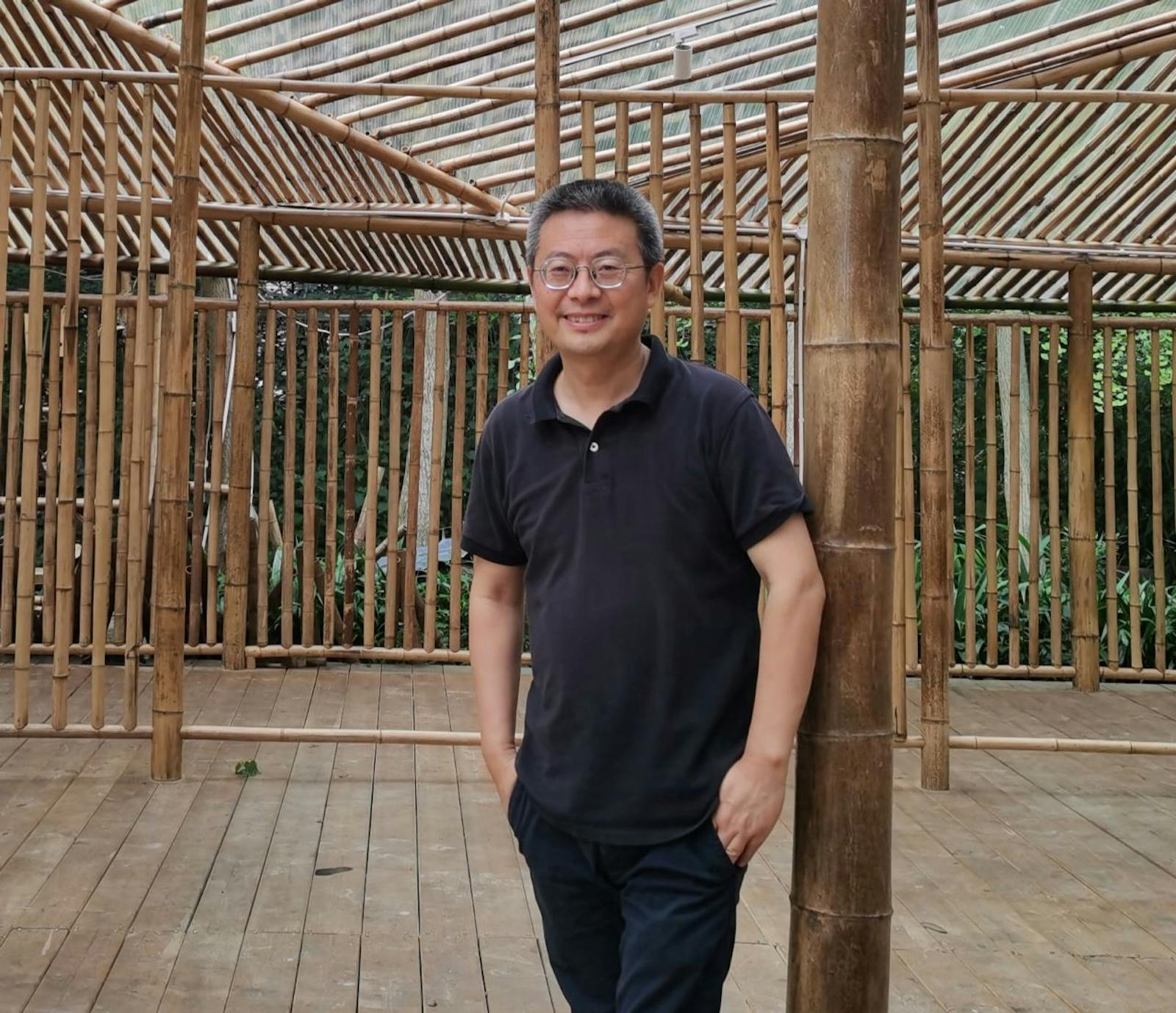
Liu Weibing
International Participations
Archives and collection
Explore hundreds contents →

